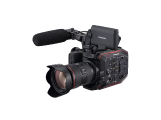Case Studies: Japan’s Leading TV Drama "Aibou: Tokyo Detective Duo" (TV Asahi)
The EVA1 was used to shoot the TV drama series,
“Aibou Season 17” (TV Asashi).
A wide range of expressions can be captured with the compact and lightweight cinema camera with its mobility and dual native ISO.
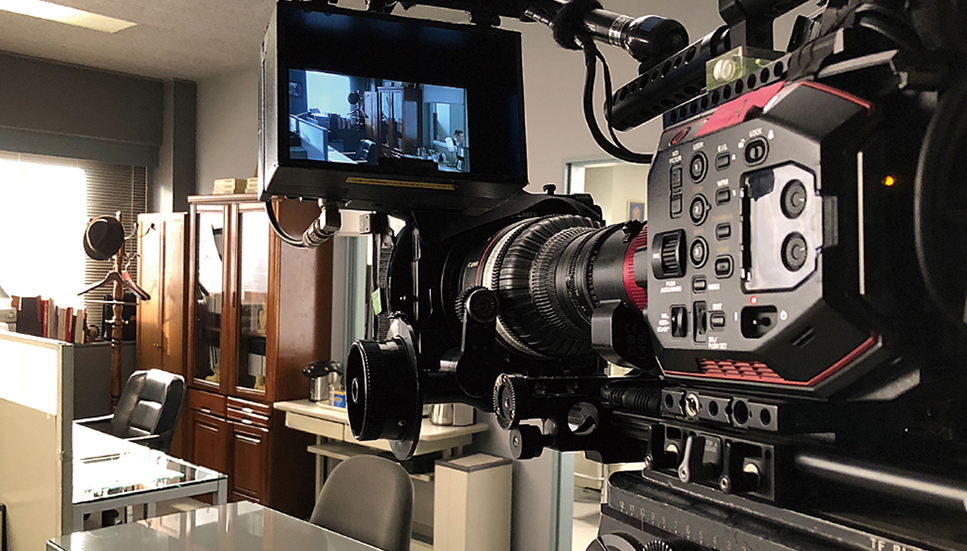
A shooting scene using the EVA1. The lens is a Canon CN7, and most of the scenes are shot on this set.
"Aibou," One of Japan's Leading TV Dramas
"Aibou," produced by TV Asahi, Toei Co., Ltd. has been broadcast as a TV drama series since 2000. In the leading role, Ukyo Sugishita (played by Yutaka Mizutani) is assigned to the Special Task Unit of the Metropolitan Police Department, and joins up with his partner (Aibou means "partner" in Japanese) to solve cases with superhuman reasoning powers and insight. This detective drama constantly maintains high ratings. The latest season, “Aibou Season 17” (aired at 9:00 PM every Wednesday) started on October 17. The average audience rating of the first episode was 17.1%, making it the highest rated initial episode of a commercial TV drama series starting in October.
Background
Considering the possibilities of compact, lightweight cameras, the AU-EVA1 was selected following a field test.
Panasonic’s compact cinema camera EVA1 was used extensively during the shooting of TV Asahi’s season 17 of “Aibou,” which was broadcast from October 17. Director Mr. Masahiro Aida (UP SIDE Co., Ltd.) had the following to say about the EVA1.
“I've been shooting with compact, high-resolution cameras for a number of years. Films and TV dramas are increasingly being shot with compact, lightweight cameras. They offer high response, and as the number of female production staff increases, lightweight equipment is often preferred.
I've been using the VARICAM LT, so this time I focused on the compact and lightweight EVA1, which offers the same level of color reproduction and image quality. Of course there are also cost benefits, but it was an exciting challenge to create new styles of images and produce a TV drama series using the compact camera. During the shooting of season 16 of “Aibou” in the beginning of 2018, we tested the EVA1 under the same conditions. The image quality was superb, and the SDI output’s Rec. 709 images, which were especially an issue when using compact cameras, were excellent with the EVA1, so I decided to adopt it for the shooting of season 17.”
The wide dynamic range dual native ISO expands the expressiveness.
After using it for shooting, Mr. Aida spoke about his experience working with the EVA1.
“The program was produced for TV so we recorded in HD, which has a light workflow, but the images were obtained from high-resolution sensors, which have 4K quality. With its wide dynamic range, the highlights are clearly preserved even after increasing the tone curve with color grading, and there is no color skipping in the night views and face tones. I noticed a significant difference compared to conventional compact cameras when watching the on-air images.”
Regarding the dual native ISO, the main feature of the EVA1, he stated, “I’m very grateful for this function. It’s completely different from a gain increase. I used an ISO2500 base not only for shooting at night, but during daytime set shooting as well. Soft, high-quality lighting that could not be obtained without turning on several large lights can be achieved by a compact light with a 100-volt power supply. I can think about lighting based on this assumption, enabling me to actively challenge myself to produce creative images. I shoot at up to ISO5000. It’s almost like having two cameras. It really expands the range of expression that can be captured.”
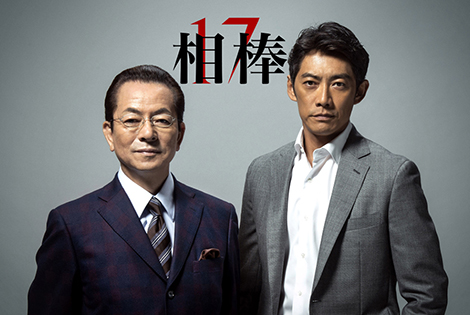
Mr. Yutaka Mizutani (left) and Mr. Takashi Sorimachi (right), the leading stars of “Aibou Season 17.”
*Photo provided by: TV Asahi
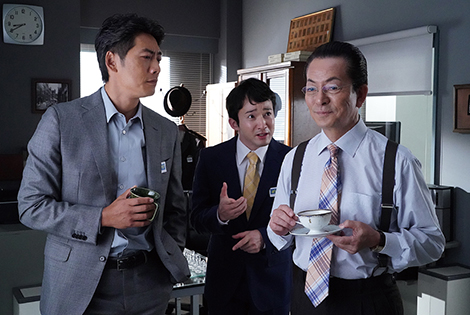
A scene from the first episode of “Aibou Season 17.” When shooting indoor scenes like this, the EVA1’s dual native ISO is actively used to create images by taking advantage of the natural light that shines through the blinds from the small window.
System Introduction
Two EVA1 cameras were constantly set, and the P2 mobile was also used for recording. By mounting the compact and lightweight camera onto a jib, the camera angles were further expanded.
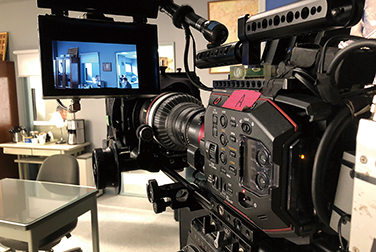
Two EVA1 units were always prepared. The Canon cinema lens (CN7 x 17 KAS S/E1) was primarily used along with multiple fixed focal length EF mount lenses. For the color setting, the dynamic range was LOG equivalent, and images were captured in eV-LOOK2 mode, which is capable of Rec.7 09 output, and run through the grading process. “We could easily shoot with the same sensation as film negative shooting, which was the ideal form of shooting,” said Mr. Aida.
The recorded images were shot with a 2K (HD) format. The SDI output Rec. 709 image signals were sent to the VE base station, and the images were recorded with the conventional P2 mobile (AJ-HPM200) in conjunction with the audio signals.
The AVC-Intra 100 codec was used for the recording format. Due to this system, the camera settings for the next scene can be carried out concurrently while the director and VE check and edit the shots, greatly increasing the shooting efficiency.
In addition to a tripod, the camera is operated by mounting a jib (mini crane and dolly.) Mr. Aida, a pioneer of this shooting method, explained, “Lightweight cameras aren’t stable so there are people who think they're difficult to shoot with, but the peripheral equipment has begun to catch up so there aren’t any problems. Rather, it lets us use a light jib to lift the compact, lightweight EVA1, so we can easily expand the camera angles.”
After the Shoot
I look forward to the possibilities of a high-resolution compact camera that lets me try new shooting methods to increase the quality of the work.
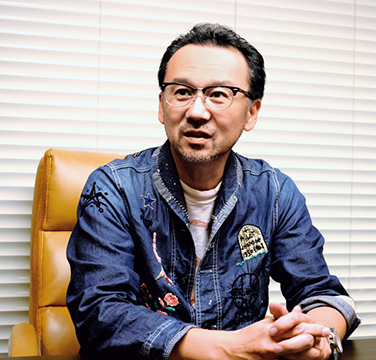
Director of photography
Mr. Masahiro Aida (UP SIDE Co., Ltd.)
Born in 1965. Member of the Japanese Society of Cinematographers(J.S.C.)
Mr. Aida has worked on the popular police drama series “Aibou: Tokyo Detective Duo” for 16 years until now. He is a pioneer of digital shooting in the Japanese TV and movie industry who actively adopts the latest technologies and workflows on his film sets. In recent years he has also worked as a director of cinematography for theatrical films. In addition to the “Aibou: The Movie” tetralogy, his filmography includes films such as “Home: Itoshi no Zashiki Warashi” (Director: Mr. Seiji Izumi,) “A Boy Called H” (Director: Mr. Yasuo Furuhata) and “Tap - The Last Show” (Director: Mr. Yutaka Mizutani.)
“By using the EVA1, I was able to shoot high quality images with ease. It's the director’s job to think about what the most beneficial decisions are within a limited amount of time and budget in order to raise the quality of the work. Simply having good image quality does not make a film better. Everything -- from the freedom of the camera angles, the lightness and ability to shoot many scenes -- ultimately leads to the quality of the film. The miniaturization of the camera body and downsizing of the tripods and other peripheral equipment greatly affect the budget savings. After a comprehensive evaluation based on these approaches, I decided to use the EVA1 this time with absolute confidence. In recent years, the same type of quality that you see in movies are expected in the content that you see on your TV screen. TV dramas must also continue to make progress to develop quality images under various circumstances. Therefore, a camera lineup that enables you to obtain the same image quality as a film camera regardless of whether the size of the camera changes is ideal. In that respect, it's great that you can use Panasonic’s lineup of cinema cameras, which includes the VARICAM 35, VARICAM LT and EVA1 according to what kind of shots are needed. I look forward to more compact cameras with high resolution and superb performance in the future,” said Mr. Aida.
Equipment Installed
Location



